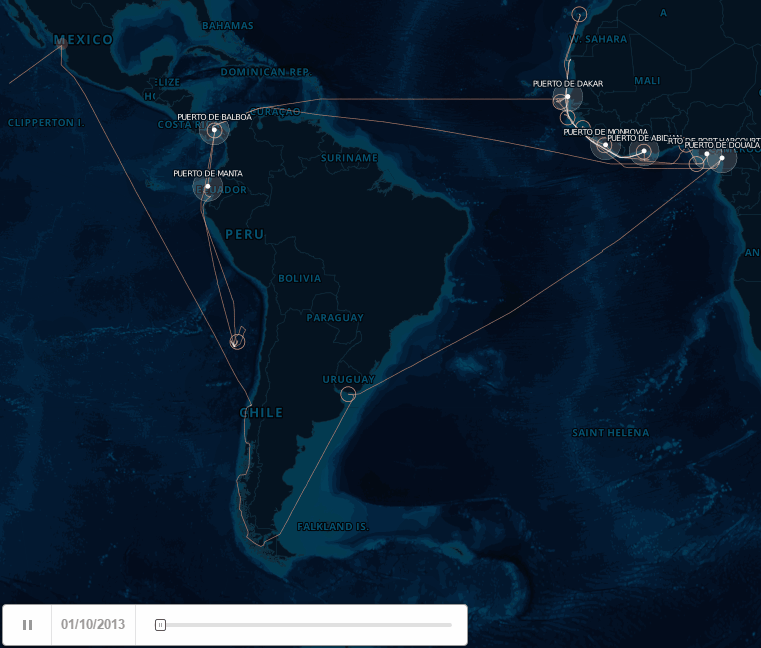Illegal, unreported and unregulated fishing is at the centre of a crisis of sustainability. Nowhere is that crisis more visible than in western Africa. Current rates of extraction are driving several species towards extinction while jeopardising the livelihoods of local fishing communities across Senegal, Ghana, Sierra Leone, Liberia and Mauritania.
Drawing on a unique satellite tracking database from FishSpektrum, this report presents new evidence of the scale and pattern of illegal, unreported and unregulated fishing. It focuses on ‘reefers’ – large-scale commercial vessels receiving and freezing fish at sea – and the use of containers. It provides evidence of practices that undermine multilateral governance rules aimed at curtailing illegal, unreported and unregulated fishing and promoting sustainable, legal practices.
This map developed tracks the movement of 35 reefers through western African waters in 2013. A high density of hotspots and an erratic track pattern highlight areas where transhipment (moving catches from small fishing boats to reefers) may be occurring.
Via odi.org
Drawing on a unique satellite tracking database from FishSpektrum, this report presents new evidence of the scale and pattern of illegal, unreported and unregulated fishing. It focuses on ‘reefers’ – large-scale commercial vessels receiving and freezing fish at sea – and the use of containers. It provides evidence of practices that undermine multilateral governance rules aimed at curtailing illegal, unreported and unregulated fishing and promoting sustainable, legal practices.
This map developed tracks the movement of 35 reefers through western African waters in 2013. A high density of hotspots and an erratic track pattern highlight areas where transhipment (moving catches from small fishing boats to reefers) may be occurring.
Via odi.org

This post may contain affiliate links. As an Amazon Associate, I earn from qualifying purchases.